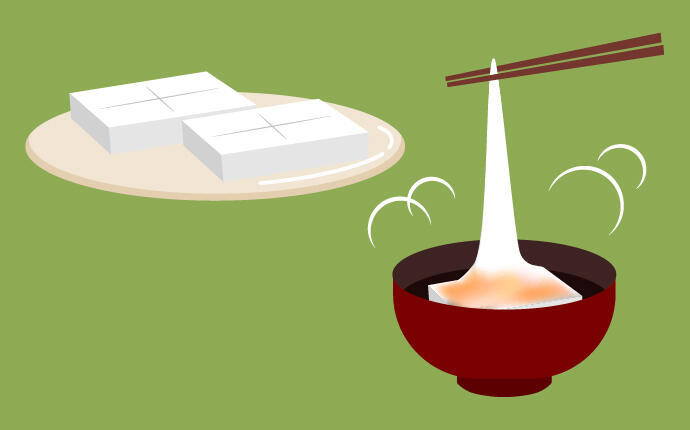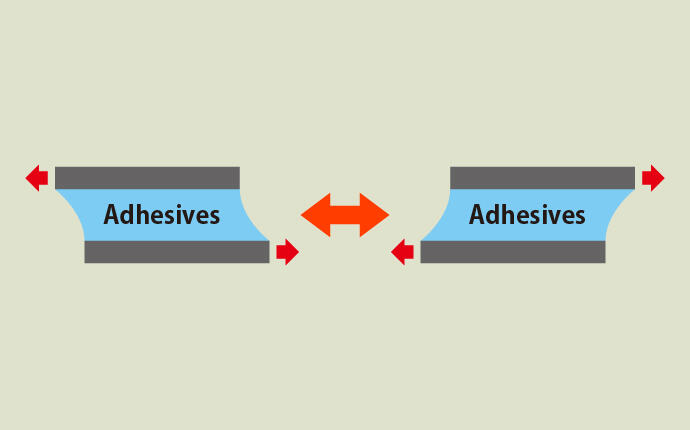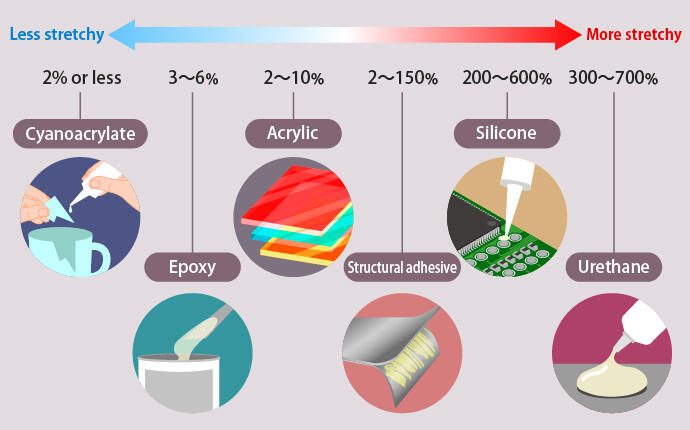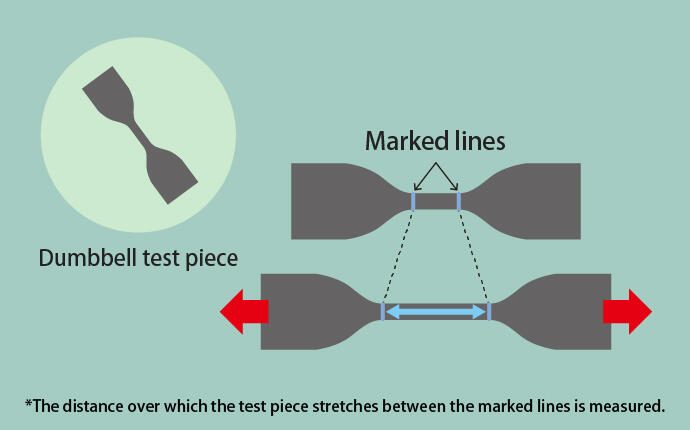Why does mochi (Japanese rice cake) stretch?
It’s because the properties of the starch change to become soft and stretchy!
Mochi is commonly eaten during Japanese New Year’s celebrations. Have you ever wondered why mochi is so stretchy? In this feature, we will delve into why mochi stretches and explain the property of stretchiness.
The properties of starch change when it absorbs water
Mochi stretches because the properties of the starch content (amylopectin) change, causing it to become soft and stretchy as it absorbs water. This transformation requires not only starch but also moderate levels of moisture and heat.
This change in properties is the reason why mochi, which are sold in stores in a hardened form, become soft and stretchy when they are cooked under the heat of a toaster.

This “stretchiness” property is actually very important in adhesives.
The advantage of stretchiness
If an adhesive is provided with stretchy properties, it will not peel off when the objects it is used on are misaligned or subject to impact. Instead, it will “stick” to these objects. This stickiness prevents damage caused by adhesives coming off in various applications in which they are used. Stretchy adhesives are used in various places, such as on automobiles, smartphones, and buildings.


The main components that contribute to elongation (stretching rate)
Let’s take a look at how the elongation of adhesives varies depending on the main components.

As you can see, the elongation is completely different depending on the main component. However, even adhesives made of a less stretchy main component can be transformed into a more stretchy adhesive by enhancing the main component itself or adding a rubber component. At ThreeBond, we research and develop a variety of adhesives tailored to the applications and needs of our customers. So, how do we measure elongation?
Measuring elongation with a “dumbbell test piece”
At ThreeBond, we use dumbbell test pieces to measure the elongation of the adhesives (how much they stretch) we develop. A dumbbell test piece is pulled from both ends using a tensile testing machine, and the amount that it needs to stretch to reach its breaking point is the elongation.

The dumbbell test pieces are prepared in a shape that conforms to JIS standards.
At ThreeBond, we have established our own ThreeBond Testing Standard (3TS). 3TS is established in accordance with international ISO standards, as well as the JIS standards based on the Japanese Industrial Standardization Act and various other national and industrial standards, enabling us to offer adhesives that have undergone various measurements and evaluations.
